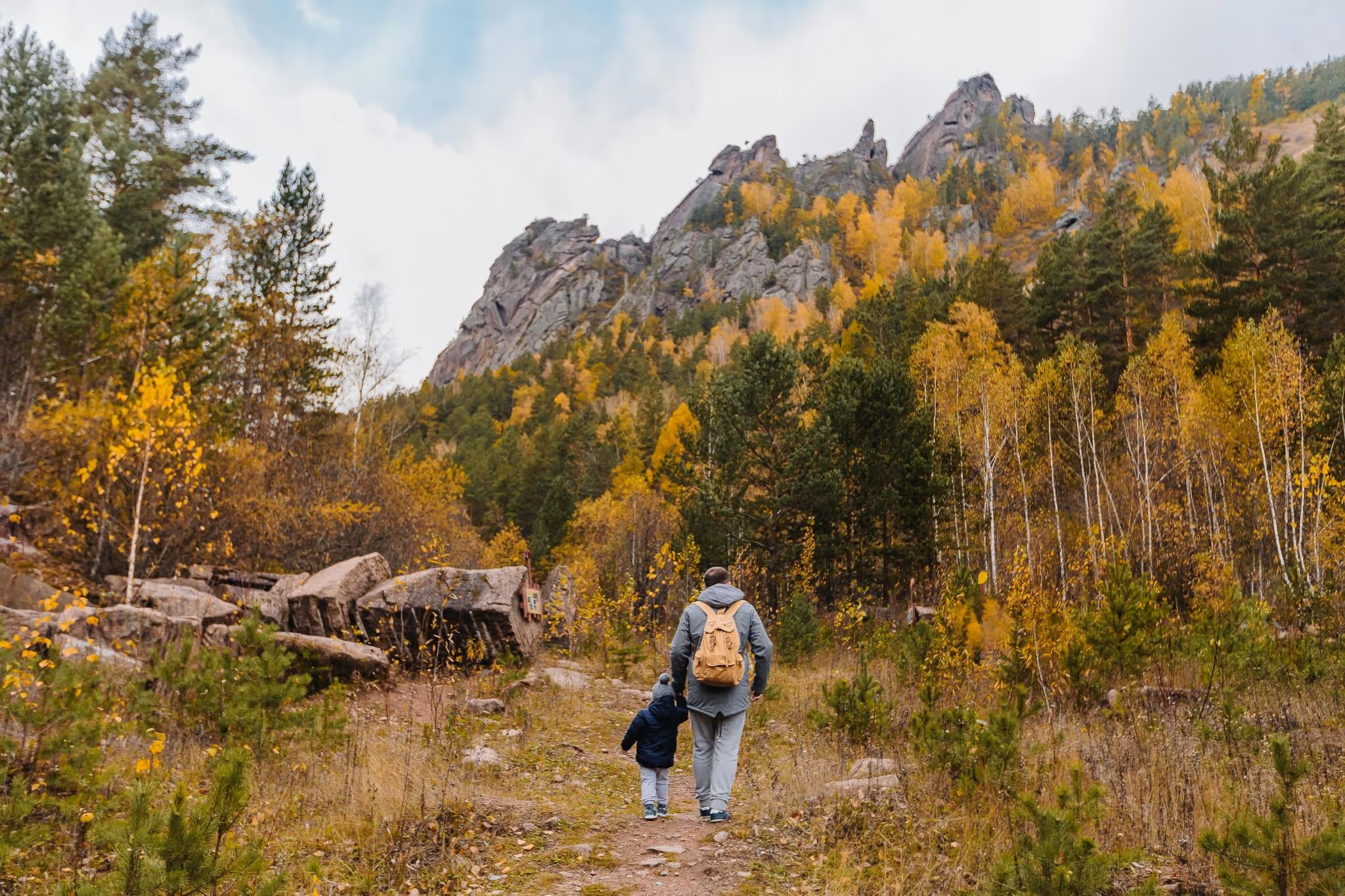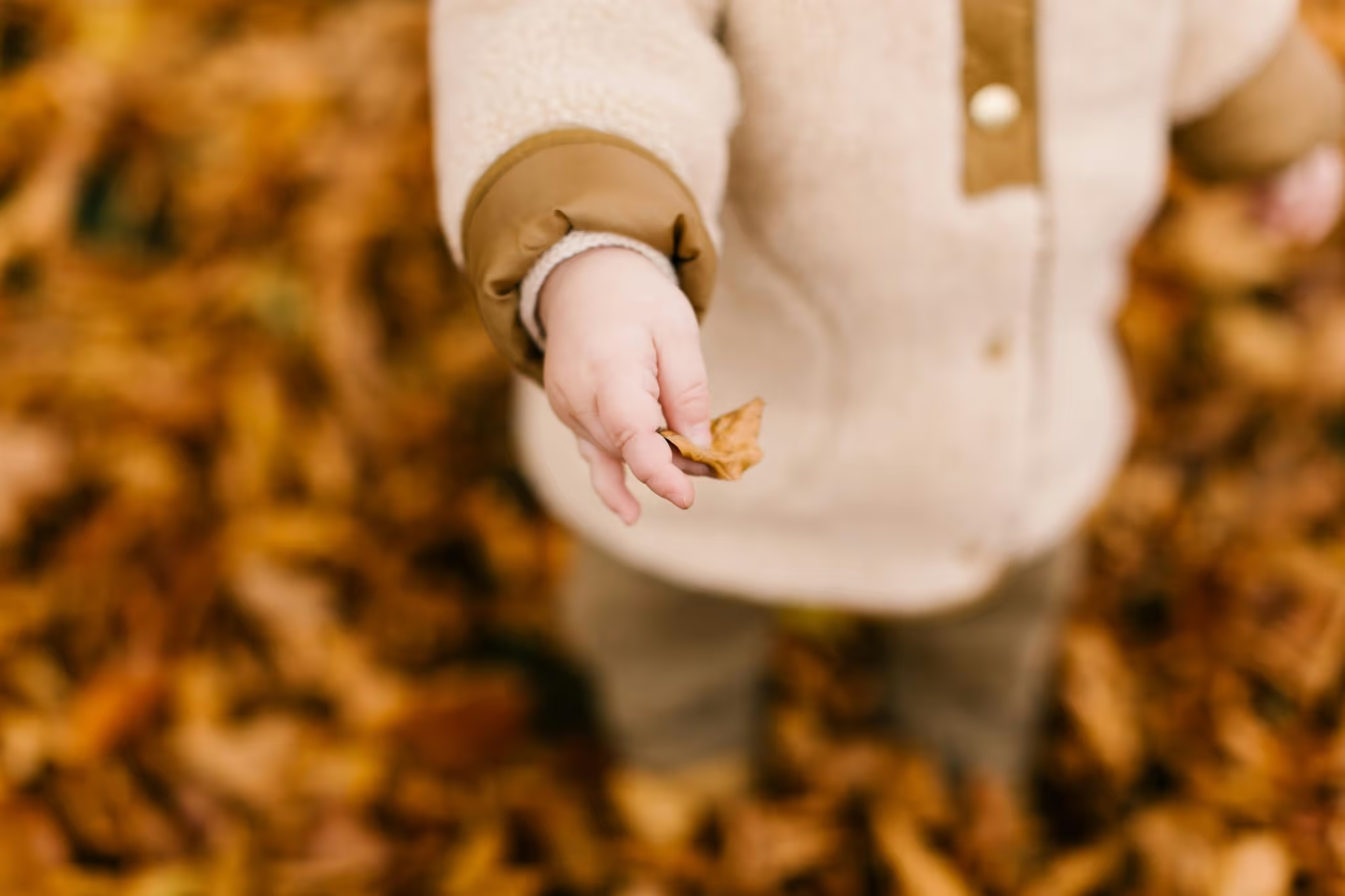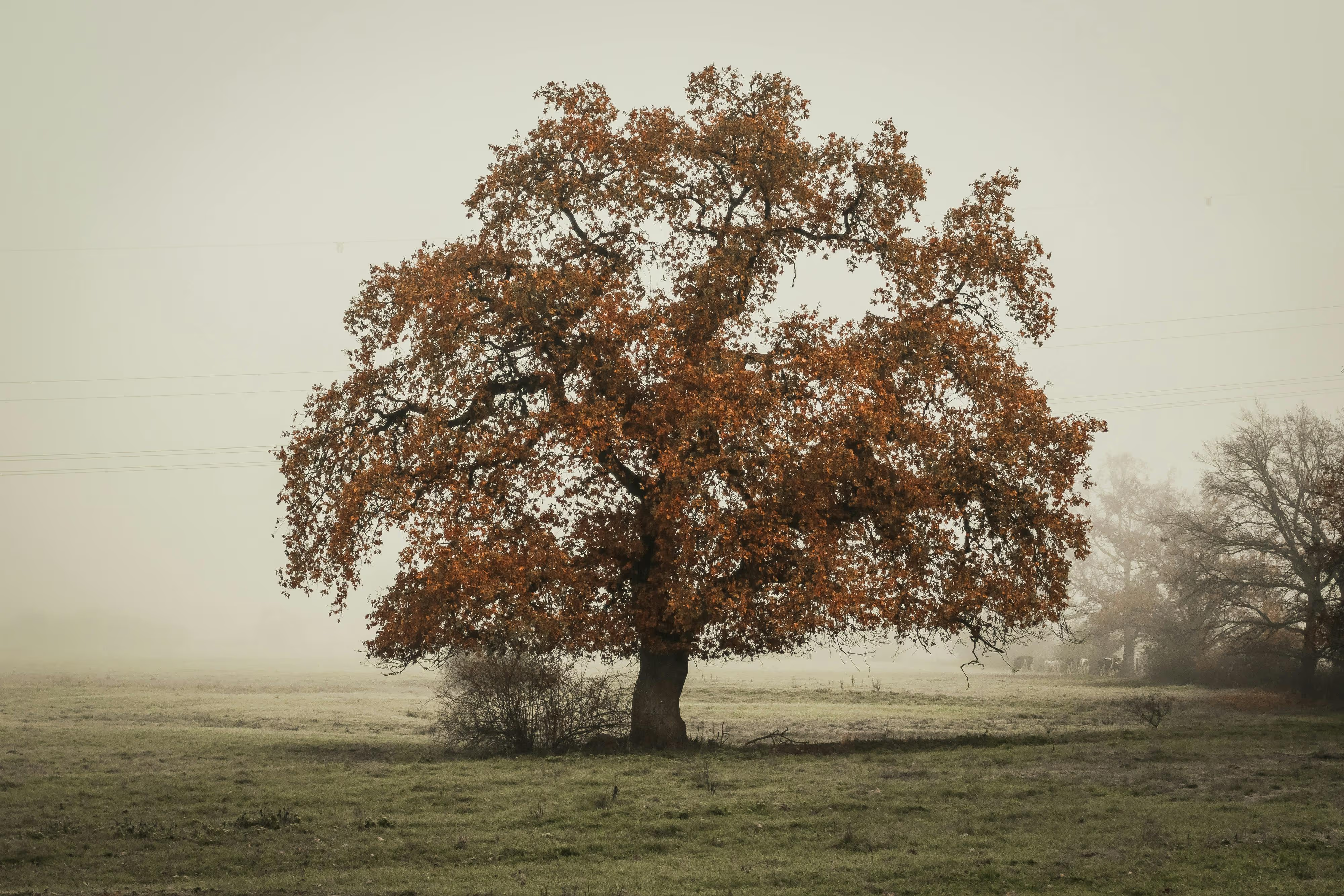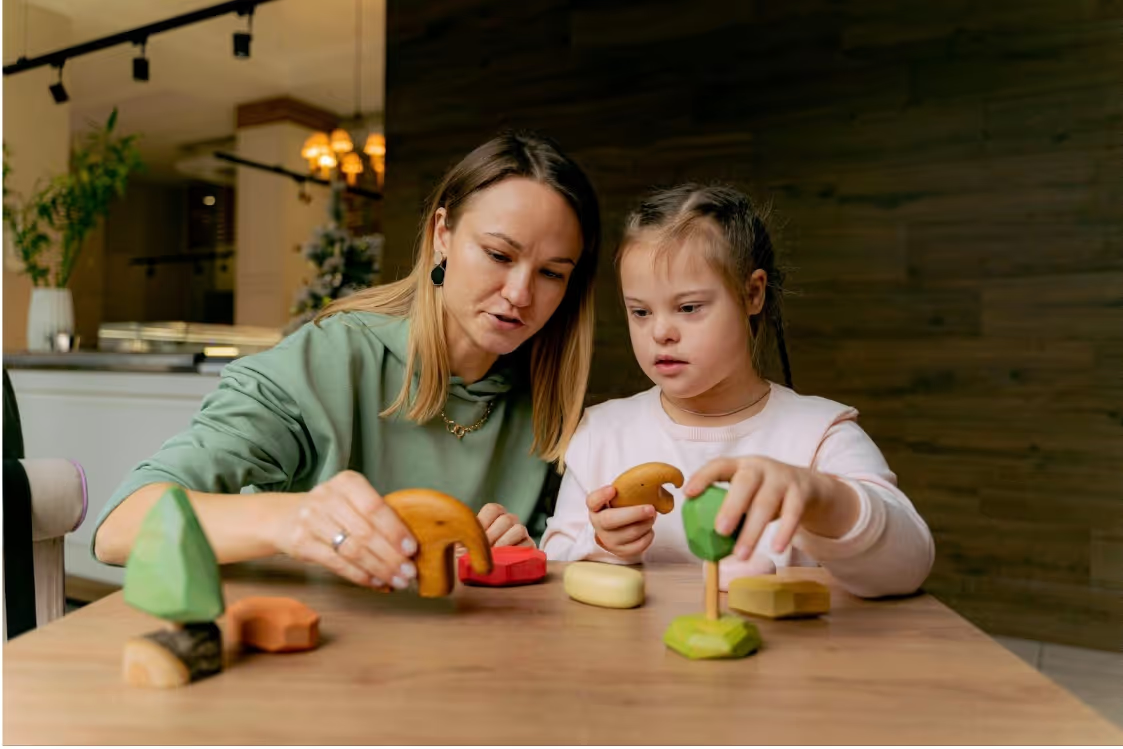Okay, let's be real: fall is basically the nanny Super Bowl. The air is crisp, the cozy vibes are immaculate, and the great outdoors turns into the world's best playroom.
But it's also a season of big, beautiful change. That mighty oak tree letting go of its leaves isn't just pretty—it's a masterclass in how rest can be a form of strength. Tapping into that natural rhythm is the perfect way to have a few new tricks up your sleeve, helping your kids connect with those big ideas of growth and renewal in a way that feels like pure fun.
We know you’re already juggling a million things, so we’ve put together five super easy, low-prep activities that do just that. Think of this as your go-to guide for adding a little extra wonder to your afternoons, without needing a formal lesson plan.

5 Nature-Based Fall Lesson Plans
Lesson 1: The Resilient Tree (Social-Emotional Learning)
- Objective: To help children understand that rest and letting go are necessary and productive parts of life and growth.
- Core Concept: Resilience, Mindfulness.
- Materials: A clear view of a deciduous tree (like an oak or maple), paper, drawing materials.
Activity:
- Observe: Take the children outside or to a window where you can see a tree that is changing for fall. Ask them what they notice. Is it losing its leaves? What colors are they?
- Discuss: Explain that in the fall, the tree isn't dying; it's getting ready to rest. Just like we sleep at night to have energy for the next day, the tree rests all winter so it can grow strong and sprout new leaves in the spring. Letting go of its leaves helps it save energy.
- Connect: Ask the children about times they feel tired. Talk about how resting, having a quiet moment, or getting a good night's sleep helps our bodies and minds recharge.
- Create: Have the children draw the tree as it looks now. On another piece of paper, have them imagine and draw what the same tree will look like in the spring, full of new leaves and maybe even flowers or fruit.
Nanny Pro-Tip: This is a fantastic tool for framing 'quiet time.' When you share photos of the activity with your employers, you can add a little note like, “Today we talked about how even big, strong trees need to rest in the fall to get ready for spring. It was a great way to connect our afternoon quiet time to the idea of recharging our own bodies!” It beautifully communicates the intention behind your daily rhythm.
Lesson 2: The Hidden Colors in a Leaf (Chemistry)
- Objective: To reveal the hidden pigments in a leaf through chromatography.
- Core Concept: Pigments, Chemistry, Observation.
- Materials: Green leaves (spinach or soft leaves from a tree work best), a glass jar, rubbing alcohol, a coffee filter, a spoon or rock for crushing.
Activity:
- Prepare: Tear the leaves into small pieces and place them in the bottom of the glass jar.
- Crush: Use the back of a spoon to crush the leaves against the side of the jar to start breaking them down.
- Add Alcohol: Pour just enough rubbing alcohol into the jar to cover the leaves. The green chlorophyll will start to bleed into the alcohol.
- Wait: Cut a strip from the coffee filter and place it in the jar so that one end is in the alcohol and the other is hanging out of the top.
- Observe: Wait for 30-60 minutes. As the alcohol travels up the paper, it will carry the pigments with it. You'll see not just green, but also hidden yellows and oranges!
Nanny Pro-Tip: This one feels like a real "wow!" magic trick. Before you start, ask the kids to predict what colors might be hiding in the green leaf. It turns the activity into a fun guessing game and introduces the idea of a scientific hypothesis in a super low-pressure way.
Lesson 3: The Acorn's Big Job (Biology & Ecology)
- Objective: To understand the life cycle of an oak tree and the role of animals in seed dispersal.
- Core Concept: Life Cycles, Ecology, Interdependence.
- Materials: Acorns collected from outside, a small pot with soil (optional).
Activity:
- Collect: Go on a nature walk and collect a few acorns. Talk about where they came from.
- Storytell: Explain that this tiny acorn holds everything needed to grow into a giant oak tree. Tell the story of the acorn: how it falls from the tree, and how squirrels bury acorns to save them for winter but often forget where they put them. The forgotten acorns then have a chance to sprout and grow into new trees.
- Examine: Look closely at an acorn. If you can, carefully crack one open to see the 'meat' inside that provides the first food for the new tree.
- Plant (Optional): If you have a pot and soil, plant an acorn. Keep it watered and see if you can get it to sprout over the next few weeks.
Nanny Pro-Tip: Connect this to the food we eat. You can say, “Just like this acorn has all the food a baby tree needs to start growing, the healthy snacks we eat give us the energy we need to play and grow strong!” It’s a simple way to link a nature lesson to healthy habits.
Lesson 4: The Floating Pumpkin (Physics)
- Objective: To explore the concepts of density and buoyancy in a fun, seasonal way.
- Core Concept: Density, Buoyancy, Prediction.
- Materials: A small pumpkin, a large basin or tub of water, other fall objects (leaves, acorns, apples, small gourds).
Activity:
- Predict: Before putting anything in the water, have the children hold the pumpkin and other objects. Ask them: "Do you think this will sink or float?"
- Test: One by one, place the objects in the water. The pumpkin will float, which is often a surprise!
- Explain: Talk about why. Even though the pumpkin is heavy, it's mostly hollow inside (filled with air), which makes it less dense than the water. The apple also has air pockets, which is why it floats, too. The solid acorn, however, will sink.
- Play: Let the children experiment with the objects, pushing them down and watching them pop back up.
Nanny Pro-Tip: Water play indoors can feel like a bold choice! A little prep goes a long way. Lay a large towel down before you bring out the basin of water, and have a few extra on hand. Making the "clean up" part of the game ("Okay, rescue divers, time to get our tools out of the water!") keeps the fun going.
Lesson 5: The Gratitude Walk (Social-Emotional Learning)
- Objective: To practice mindfulness and gratitude by focusing on sensory details.
- Core Concept: Gratitude, Mindfulness, Sensory Awareness.
- Materials: Just yourselves and the outdoors!
Activity:
- Set the Intention: Before you head out for a walk (even just around the block), explain that you're going on a special "thank you" walk. The job is to find as many things as possible to be thankful for.
- Focus on Senses: Guide the conversation using the five senses:
- “I’m thankful for the sound of crunchy leaves under my shoes.”
- “I’m thankful for the feeling of the cool wind on my cheeks.”
- “I’m thankful for seeing the bright red color of that leaf.”
- “I’m thankful for the smell of the damp earth.”
- Share: Take turns sharing what you find. There's no right or wrong answer. The goal is simply to notice the small, wonderful things in the world around you.
Nanny Pro-Tip: This is a powerful tool for shifting the mood on a tough afternoon. If a child is feeling grumpy or frustrated, suggesting a quick "thank you walk" to the front step and back can be a gentle reset, helping them move from a place of frustration to a place of calm observation.

Your Adventure Nannies Fall Activity Kit!
We’ve turned these lessons into some fun, ready-to-go printables. Use them to guide your experiments, document your discoveries, or just as a fun coloring activity. They’re also a great thing to leave on the counter for parents to see what you’ve been up to!
- The 'Why' Behind the Play - Developmental Learning Outcomes Chart
- My Awesome Leaf Experiment
- Sink or Float? My Predictions!
- Worksheet: The Resilient Tree
- Bonus: My pumpkin seed journal
These activities are just a few ideas of simple ways to spark curiosity, build confidence, and connect with your nanny kids on a deeper level this autumn. A change in seasons is a chance to show them that learning is everywhere and that they are capable, observant, and creative little people.
We hope these ideas bring a little extra joy and discovery to your fall adventures. You’re doing incredible work every single day. Go make some memories!




